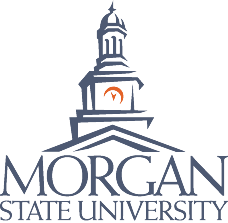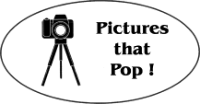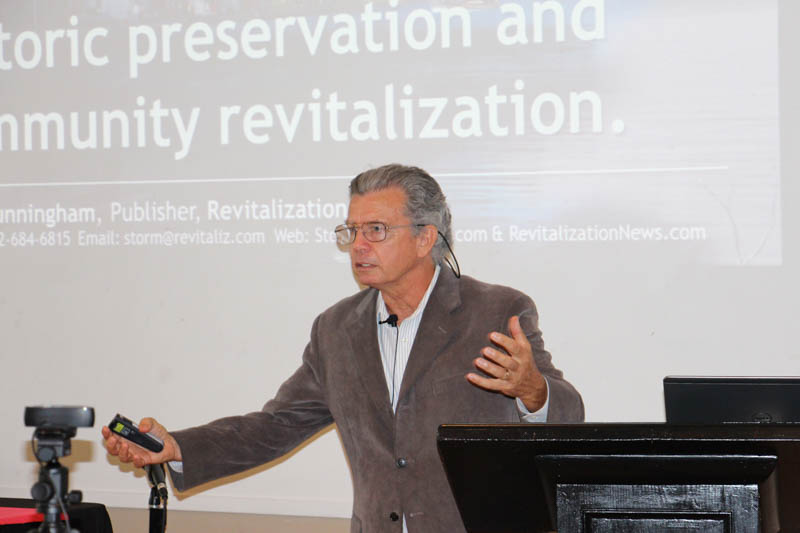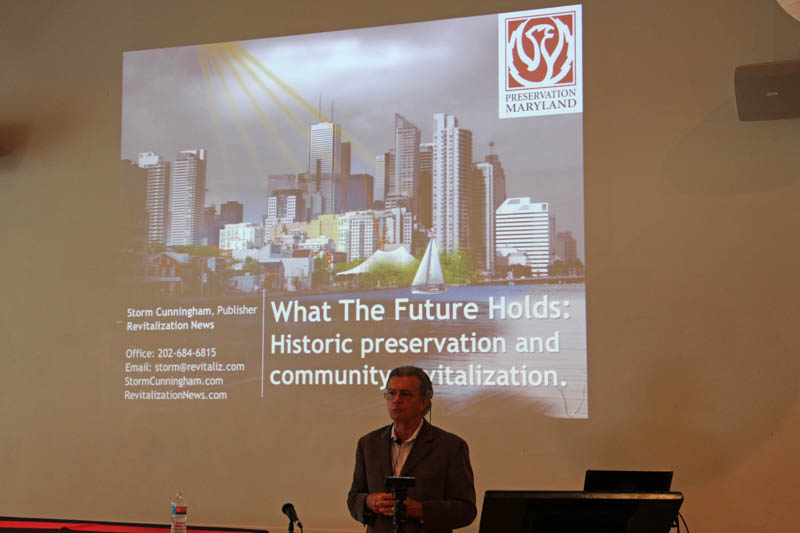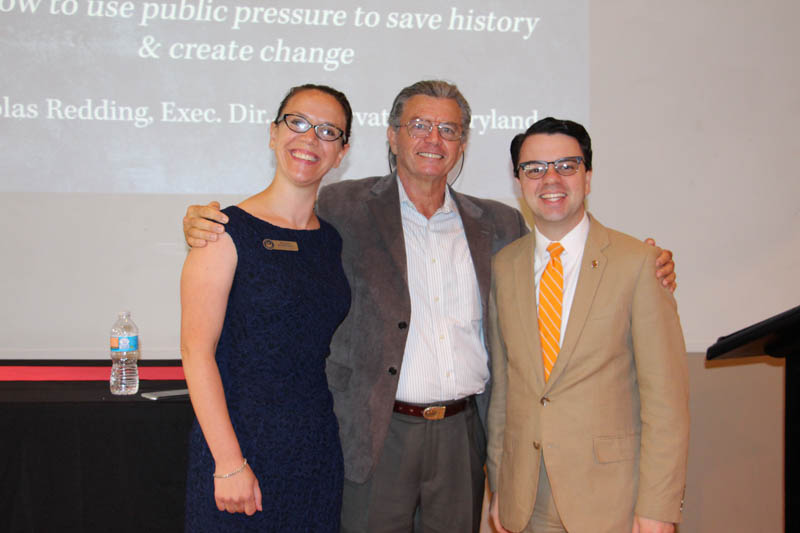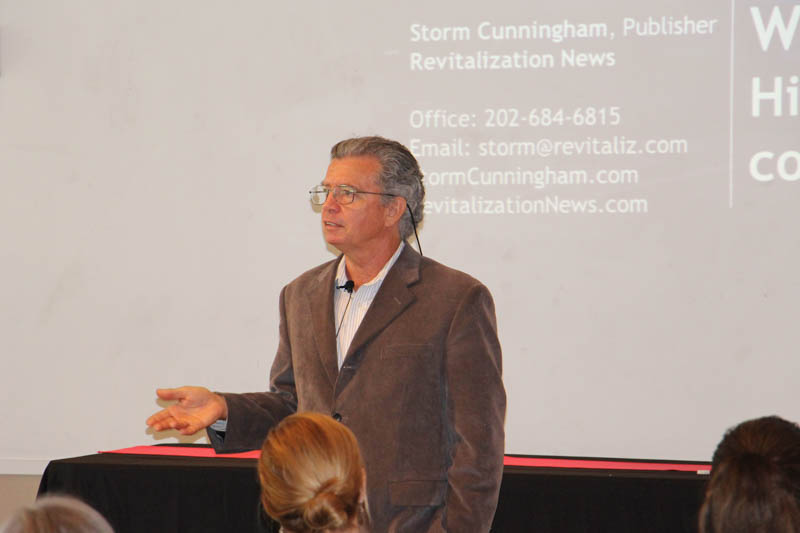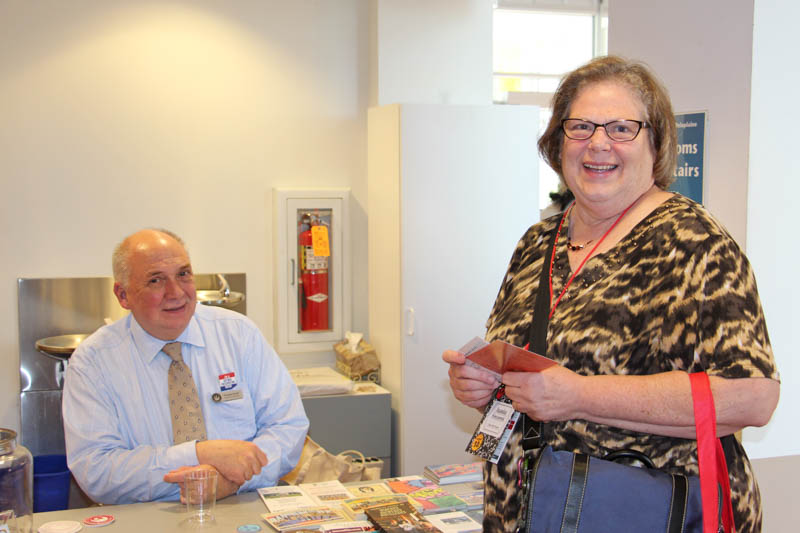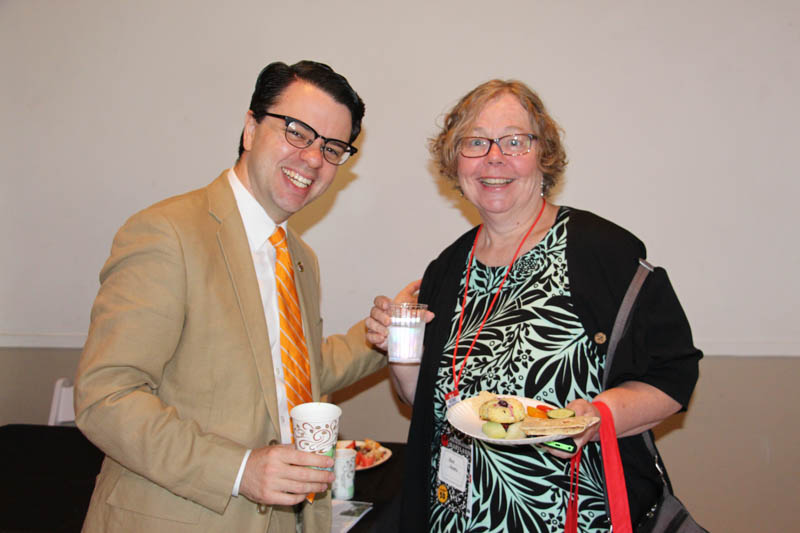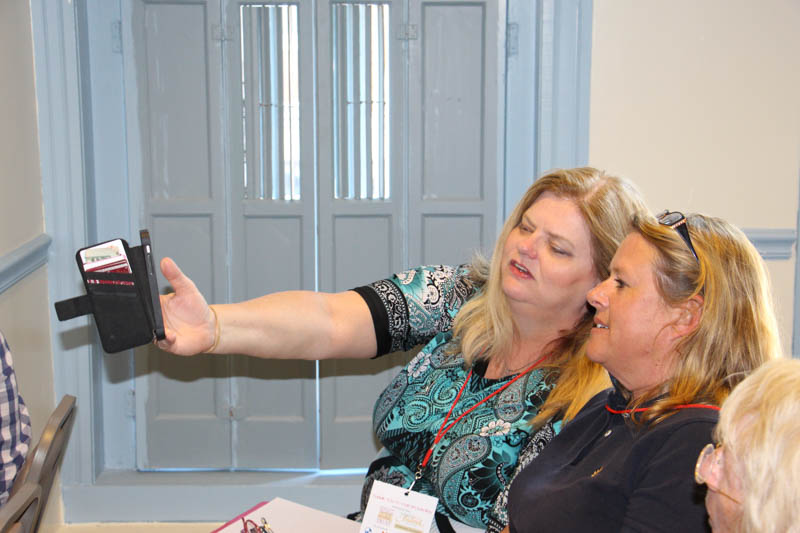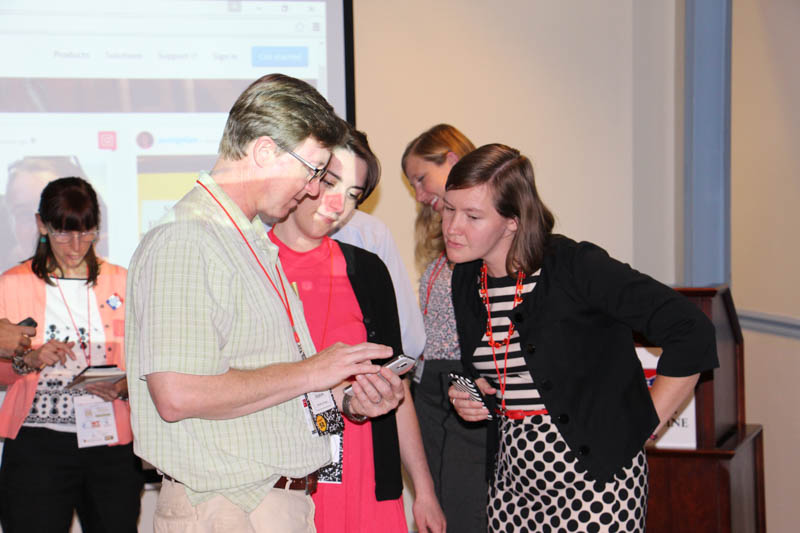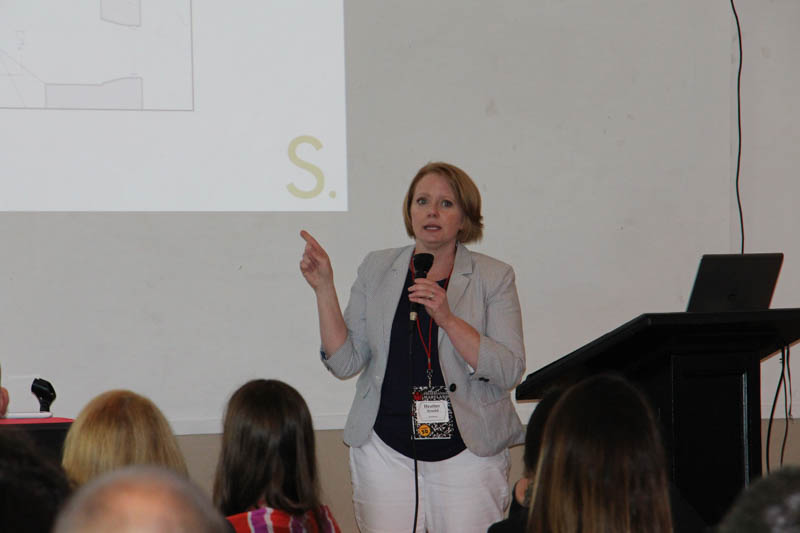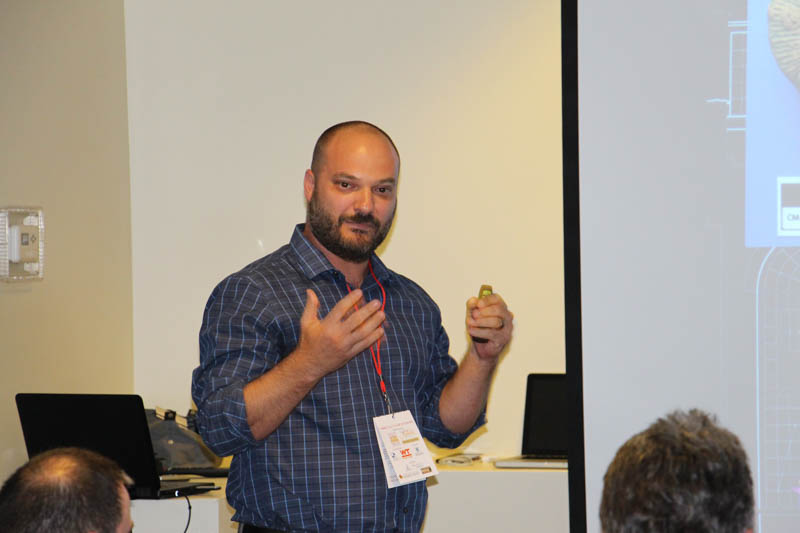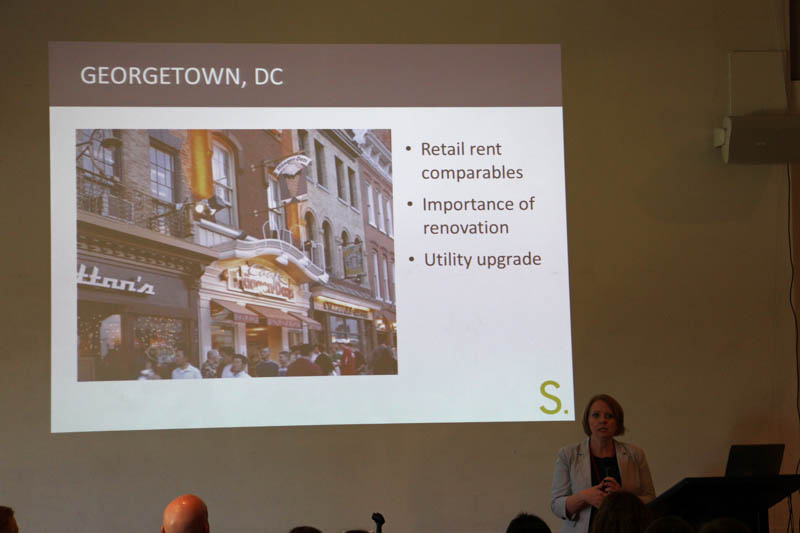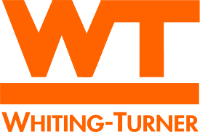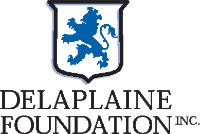On Thursday, July 21, more than 120 people gathered at the Delaplaine Visual Arts Education Center in Frederick for an amazing day of networking and education. This year’s Summer School was our biggest and best yet with 20 speakers from around the state and the country joining together to share lessons learned, bright new ideas and successful tricks of the trade.
As we celebrate the fiftieth anniversary of the National Historic Preservation Act in 2016, the Preservation Summer School planning committee wanted to look back but also look forward. The field of historic preservation has come so far over the years, but we still have a long way to go, and each of this year’s sessions was focused on the steps we can take to achieve a brighter more vibrant future with more historic resources all around us.
- Storm Cunningham speaking on the importance of preservation for the future of community revitalization.
- Storm Cunningham speaking on the importance of preservation for the future of economic growth.
- Margaret De Arcangelis and Nick Redding with Storm Cunningham (center).
- Storm Cunningham speaking on the importance of preservation for the future of economic growth.
KEYNOTE SPEAKER: STORM CUNNINGHAM
Storm Cunningham, the publisher of Revitalization News, got the day started on an energetic note by encouraging us to break out of our silos. Preservationists need to work with conservationists, developers, economists, planners and any other field that has a connection to the built environment. We cannot think only the field of preservation has the answers to all our challenges. Throughout his presentation Storm reminded the group that we need to think about the restoration economy. If you have obsolete or fragmented assets in your community, think about repurposing and renewing but absolutely do not forget about reconnecting. Your great spaces will not be used if people cannot easily get to them.
After Storm’s presentation, some participants stayed at Delaplaine to learn how to advocate for funding and legislation and others headed to the National Museum of Civil War Medicine to learn from practitioners from the museum and the Maryland State Archives about how to incorporate social media into the work they are doing. Afternoon breakout sessions included topics such as telling your story with a Story Map, using lasers and drones to document your historic sites, how to make a pitch to corporate sponsors and what makes people connect with a small town and keeps them coming back.
- Jana Carey, Elly Colmers, and Elena Volosina, all representing Preservation Maryland.
- Doug Harbit, Preservation Maryland and Juanita Wieczoreck, Church Hill Theatre.
- Nichoals Redding posing with Ann Jones.
- Meagan Baco, Preservation Maryland with interns.
- Attendees of the social media discussion.
- Emily Huebner, Maryland State Archives.
- Amelia Grabowski, Civil War Medicine Museum.
- Johns Hopkins, Baltimore Heritage, Emily Huebner, and Auni Gelles (left), Heart of the Civil War Heritage Area, examining a cell phone at the social media presentation.
- Heather Arnold, StreetSense, giving a midday presentation.
- Joe Nicoli, Direct Dimensions, discussing laser scanning.
Everyone was forced to break out of their silo right after lunch when Heather Arnold, a principle at StreetSense, shared some great ideas with the group during her session called “Retail in History?” Retailers can make great use of historic buildings, but everyone needs to recognize this is a give and take relationship. Retailers like the suburbs because those made to order storefronts are move-in ready. It is your job to help them think creatively and envision a different future that involves adaptively reusing our historic resources.
These are just a few of the lessons we heard at this year’s Summer School.
THIS YEAR’S LINE UP
Keynote Address: “What the Future Holds: Historic Preservation & Community Revitalization” by Storm Cunningham
As publisher of Revitalization News, Storm Cunningham is on top of the latest trends in urban/rural regeneration, nature restoration, and economic resilience. As a consultant, Storm helps cities and regions find their best revitalization opportunities, creating effective strategies for funding and action. As a speaker, Storm inspires people, helping places overcome pessimism, partisanship, lethargy, and silos when launching renewal efforts. You will leave this session optimistic about the future and ready to seize all of the opportunities of Storm’s “Restoration Economy.”
Breakout Session #1 – Reaching Out To The Community
1A – Advocating for a Brighter Future
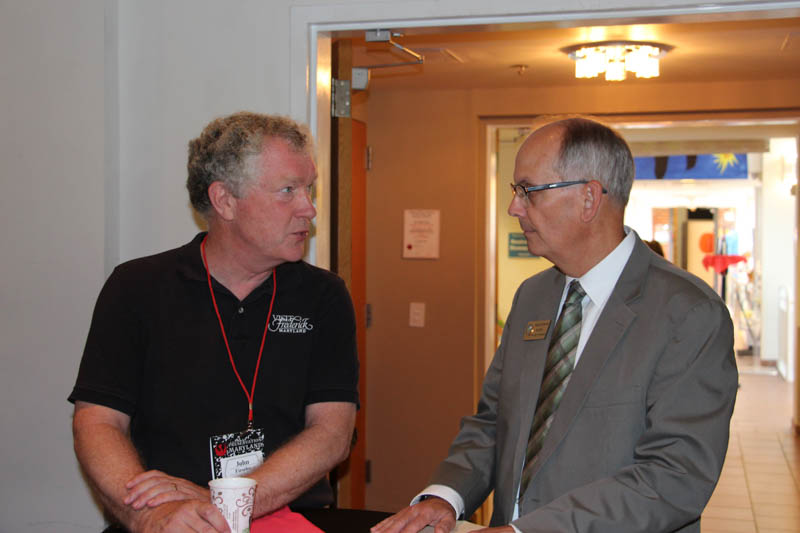
John Fieseler (left), Frederick County Tourism Board with Mayor McClement of Frederick
Presenters: Nicholas Redding, Preservation Maryland; and Kristen Harbeson, Maryland League of Conservation Voters
No matter the type of organization, we can all benefit from becoming better communicators and convincing decision-makers that history, heritage, culture and preservation matter. Join Preservation Maryland Executive Director Nicholas Redding and thought leaders from several prominent advocacy organizations to learn about what it takes to become an advocate. This panel will dive into the world of advocacy and provide real-world takeaways for organizations and individuals interested in giving your work a passionate and informed voice.
1B – #PreserveMD: Social Media for Historic Preservation
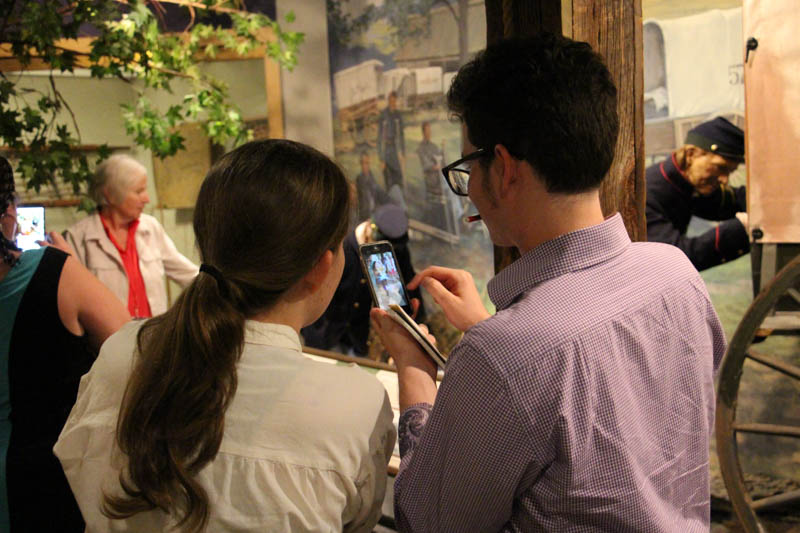
Katherine Boyle (left) and Ben Israel come up with a hashtag while exploring the Civil War Medicine Museum.
Presenters: Amelia Grabowski and Jake Wynn, National Museum of Civil War Medicine; Emily Huerbner and Allison Seyler, Maryland State Archives; Auni Gelles, Heart of the Civil War Heritage Area; and Meagan Baco, Preservation Maryland
In this intermediate level workshop, we will examine how historic preservation organizations can use social media to further their mission and extend their reach. We will approach social media as a tool for community outreach and engagement, discussing case studies from the Maryland State Archives, the National Museum of Civil War Medicine, the Clara Barton Missing Soldiers Office, and others. Participants are invited to live-tweet the session using the hashtag #PreserveMD. Bring your smartphone (and charger) for an interactive exercise.
Mid-Day Group Session: “Roadblocks And Solutions For Adaptive Reuse” By Heather Arnold Of Streetsense
- Heather Arnold, Streetsense, on how historic districts can work to attract businesses.
- Heather Arnold, StreetSense.
Heather Arnold, Director of Research + Analysis at StreetSense,will share some of her experiences getting adaptive reuse project off the ground and how her views on historic preservation policy have changed over time. StreetSense is an uncommon collective of creative thinkers who create memorable places, distinctive brands and meaningful experiences. This session will conclude with what is sure to be a lively Q&A.
Breakout Session #2 – Embracing Technology
2A – Tell Your Story with a Map
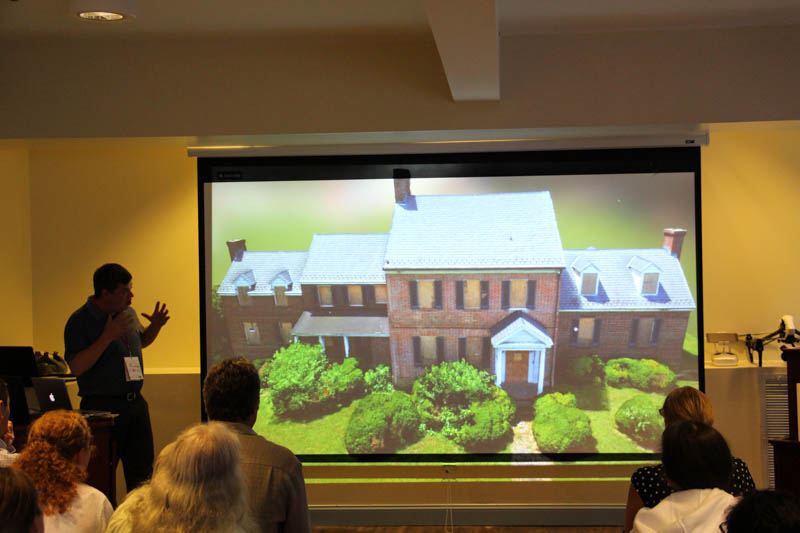
Terry Kilby, Elevated Element, showing digital model of Whites Hall, the birthplace of Johns Hopkins.
Presenters: Kirsten Crase, University of Maryland; Reina Murray, National Trust for Historic Preservation; and Owen Evans, ESRI
The saying goes that a picture is worth a thousand words, so find out today how to share your story using interactive maps. During this introductory session, you will hear from the folks who built the story mapping industry about why it exists and how you can use it to your benefit even with limited technical knowledge. Also hear from a non-profit about the mapping tools they use and how it helps to spread their message.
2B – Lasers and Drones: Need We Say More

Joe Nicoli, Direct Dimensions, on how drones can be used to enhance the work of preservationists.
With each passing year, these tools get easier to use and more affordable which means pretty soon you will be able to use this cutting-edge technology on your project. Join us as we hear from an engineer who is creating his own drones to get aerial photographs of historic buildings, a developer who uses 3D laser scanning to document each and every crevice of a building’s exterior and a cultural resource management firm that employs these tools on a wide range of project. You will leave this session amazed at the potential for the future.
Breakout Session #3 – Putting Your Tools To Work
3A – It’s Not Charity: Developing Effective Corporate Partnerships

Presenters: Brittany Barber, Downtown Frederick Partnership; Douglas Harbit, Preservation Maryland
When a nonprofit looks to corporations for support, it shouldn’t just be about generating a tax deduction. Companies are organized for the business of commerce. Nonprofits that understand this motivation can build partnerships with companies that reinforce their mutual interests. As in any commercial exchange, both sides need to gain from the transaction in order for it to be a mutually beneficial exchange. This session will address how these concepts are being applied from three different perspectives: a local historic Main Street organization, a local historical site, and a membership-based historic preservation organization.
3B – Can Small Towns be Cool?
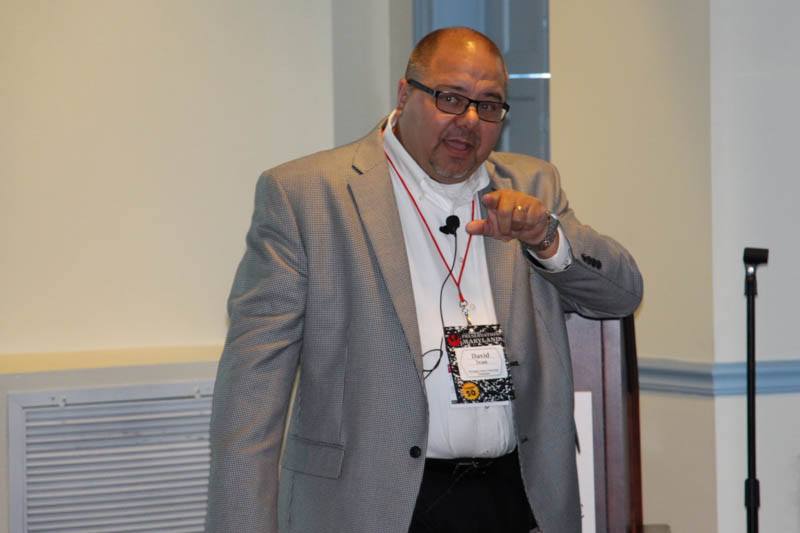
Dr. David Ivan, Michigan State Univeristy, on ways small towns can appeal to younger generations.
Presenters: David Ivan, Greening Michigan Insitute, Michigan State University
We live in a changing world. Creating successful downtowns and achieving community-wide vitality requires innovative and non-traditional community and economic development strategies. Based on the approaches of more than 300 high performing small to mid-sized towns across the United States this presentation by David Ivan with Michigan State University provides real strategies from real communities on enhancing entrepreneurship, strengthening human talent, addressing youth migration, and building successful regional partnerships that result in more vibrant downtowns and communities. This fast-paced session which relies on audience participation will leave you thinking about which lesson you will implement the next day.
THANK YOU TO OUR GENEROUS SPONSORS
PRESENTING SPONSORS
Platinum Sponsors
Gold Sponsors
Silver Sponsors

